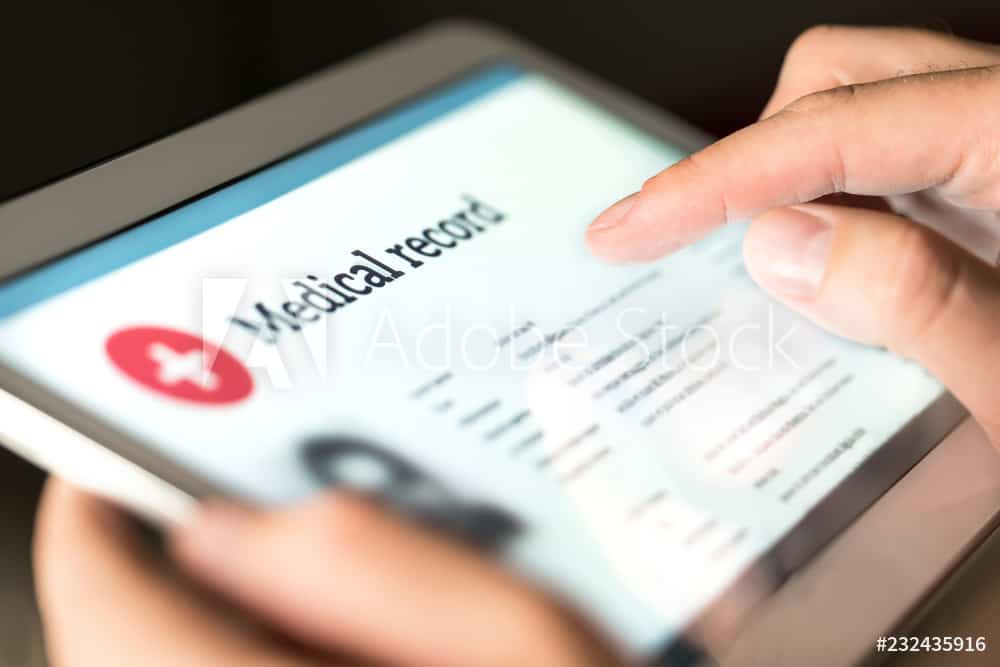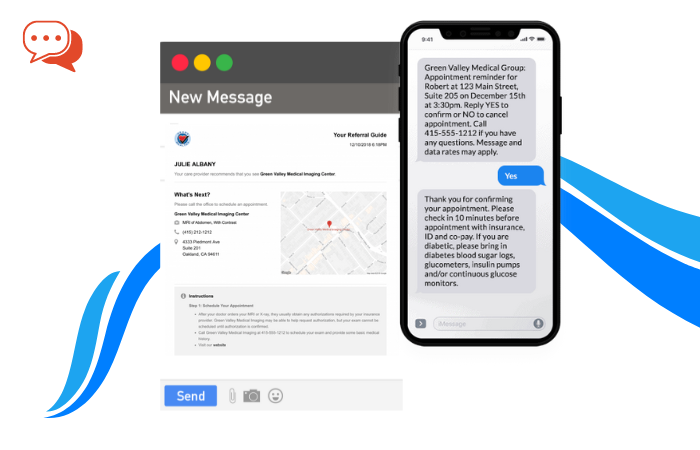The challenges now facing the nation’s healthcare system are well-known. From onerous data sharing procedures and the ambiguity about clinical trials and medical research to complex billing and less-than-optimal patient adherence, healthcare stakeholders are under increasing pressure to both control costs and continue to provide high-quality care to patients. In this article, we unpack the massive potential of blockchain technology to transform healthcare and five key ways it can do it.
However, the technology powering bitcoin may soon work to alleviate many of these pressures and provide both patients and healthcare providers with secure, seamless, and efficient ways of sharing data, processing claims, and enhancing medical research.
What if every patient could safely and privately access the full history of their health? What if you could consult a patient’s entire vital sign history, every medicine taken, information about every doctor’s visit, illness, and surgery performed? How valuable would that be, not only to patients but to your practice and the industry as a whole?

Photo by TheDigitalArtist on Pixabay
Blockchain 101
A blockchain is really nothing more than a decentralized, secure database. It is a storehouse to validate events that happened in the past. Except it has a few enhancements over your run-of-the-mill data warehouse:
- It is decentralized: no single entity controls the flow of information
- It is consensus-based: different parties maintain exact copies of the same ledger, so everyone has to agree on the information being added
- It is ‘add-only’: you can’t change a previous entry. You can only add to it
- New information can’t conflict with what’s already on the blockchain
- Anyone on the network can access and replicate the information stored there
These attributes allowed the blockchain to act as the distributed accounting platform to record financial transactions for digital currencies like bitcoin.
Blockchain technology circumvents the need for one central administrator. It can effectively control who has access to any data stored within the shared ledger, giving it remarkable security and hacker-proof properties. To hack a single block in the chain, a hacker would need to infiltrate every other block in the chain’s chronology — a virtually impossible feat. Click here if you’d like to learn more about blockchain and how it works.
Blockchain now has incredible appeal to healthcare providers across the industry that require secure and efficient access to a patient’s complete medical history.
Keep reading to find out how blockchain technology may shape the future of healthcare for patients and providers.
1. Medical Data Sharing and Management
Problem:
Behind cancer and heart disease, medical error is the third leading cause of death in the U.S. Part of the problem is the tremendous lack of transparency between medical institutions and the inability of hospital systems to safely and efficiently share data.
EHRs were never conceived to manage lifetime medical data among multiple institutions. During a lifetime, patients scatter their medical records across various organizations and from one health system silo to the next, often losing access to critical past data.
Adding to the complexity of the issue is that different hospitals have their own ways of managing their data. A 2017 report by MIT discovered that twenty-six different EMR systems exist across the Boston area alone. With critical patient information being so costly and cumbersome to share, it’s no wonder the flow of medical data is often stifled — leading to increased risks of medical error and fatalities.
Solution:
Blockchain can securely ease the transfer of patient records among health systems nationally and across borders, boost the coordination of member health management, lower transaction costs and risks, and even support medical tourism.
A single entity doesn’t control medical data stored on blockchains. Therefore, it can be distributed among groups of individuals and organizations. Every transaction on the chain is time-stamped, becoming a permanent record of the entire whole that can’t be altered afterward.
2. Drug Development and Supply Chain Integrity
Problem:
Counterfeit drugs make up a growing percentage of the U.S. drug market and even more so in developing countries costing pharmaceutical companies some $200 billion in annual losses. Even though anyone who purchases medicine can ask for a certificate of authenticity, bad actors have been known to falsify such documents.

Photo by Myriam Zilles on Unsplash
Solution:
Blockchain in healthcare could improve traceability and transparency in the supply chain, providing both the big picture and minute details of every transaction of any pharmaceutical product. Blockchain technology is already being used to optimize supply chain integrity by companies such as IBM, Walmart, and UPS.
With supply data stored in a blockchain, patients could potentially access real-time information about any drug from production to arrival at the retail pharmacy. Barcode labeling would enable other features to be woven into the system, such as:
- Monitoring the availability of medicines in polyclinics
- To whom the medicine was transferred
- The quantity of medication transferred
In this way, blockchains can transform the system from disconnected data segments owned by a single entity to the life history of any resource, whether it’s a patient’s health record or a drug moving through the supply chain.
3. Claims, Billing Management, and Fraud
Problem:
Roughly 5-10% of healthcare costs are fraudulent, and in 2014, the federal government recovered $5.7 billion in health care fraud cases. Medicare fraud accounts for some $30 million in losses annually.
Solution:
Using a blockchain automation-based system could substantially reduce admin costs related to claims, payments, and processing time and make intermediaries obsolete. As the Capital One-Gem Health collaboration shows, blockchain may improve the significant logistical information tracking challenges of reliability-centered maintenance (RCM) operations.
Problem:
As it stands now, all claims processing is done manually, and payer networks can break down when a provider relocates or moves into or out of the payer’s network. An estimated 40% of payer’s provider data contains errors or missing information. Payers also bear the costs of verifying provider details every year. And when the data does change, it needs to get processed by a myriad of siloed systems among one or more payer networks—the result: higher costs and increased process time.
Solution:
Blockchains could enable one accurate source of provider information. A Blockchain ledger could unify all stakeholders in the network: payers, providers, and patients, increasing the system’s efficiency by requiring only one update throughout the network. Smart contracts on the blockchain could transform the manual fashion in which member claims and disputes are currently processed.
Every insurance policy could be embedded in a smart contract or program, agreed upon, and accessible to all stakeholders. Bills could be automatically be validated, enhancing cycle time and reducing costs, and practically doing away with disputes.
4. Medical Research
Problem:
Currently, half of all clinical trials go unreported, and researchers often neglect to share their results, creating knowledge gaps for all stakeholders and putting patient safety in jeopardy.
Solution:
Having a secure and centralized storehouse of clinical trials and patient outcomes for new treatments could vastly enhance patient care and results. The unchangeable time-stamped blockchain records of clinical trials and outcomes could help reduce result switching, data snooping, and unethical reporting, lowering fraud and error.
Blockchains could mobilize new and innovative research initiatives by sharing patient results more broadly (with patient consent). Moreover, fresh and innovative research initiatives would be catalyzed by sharing patient results more broadly (with patient consent), thus driving remarkable cooperation between participants and researchers.
5. Case Management
Blockchains can also have a positive impact on patient case management. Once a patient consults a physician and a treatment plan devised, the treatment program can be added to the blockchain ledger as part of the patient’s medical record.
Then, a smart contract can be developed using all the elements of the patient’s case management. The contract specifies the framework of the patient’s treatment goals coupled with the rules defined within the smart contract to track and evaluate the patient’s progress. Once the patient’s file is incorporated into the blockchain, it can provide chronological data about the delivery of care and its response.
Another layer of benefit can be found where a patient’s health information is culled from wearable monitoring devices and social media applications and then uploaded to the patient’s personal blockchain ledger. Again smart contracts can gauge the patient’s performance toward their health goals.
The great thing about the process is that anyone in the network can view the patient’s data. Still, only once the patient gives their consent, thereby removing the need for centralized control and lowering the chance of PHI data theft.
The Times They Are A-Changin’
By no means is blockchain a panacea for the entire healthcare industry. However, the advantages of blockchain are compelling. Certainly, they represent a major step in the right direction as more and more healthcare organizations assess how blockchain technology can enhance their operations. Its potential benefits are sure to augment as blockchains in healthcare inch closer to commercialization.
The increasing demand for healthcare services and integrated-care delivery, along with a heightened emphasis on member health management, has given rise to the need for an information management system not dependent on intermediaries. The blockchain is already starting to deliver on these promises. Its robustness and security show immense potential to boost healthcare performance, enhance the quality of care, and reduce delivery costs.











